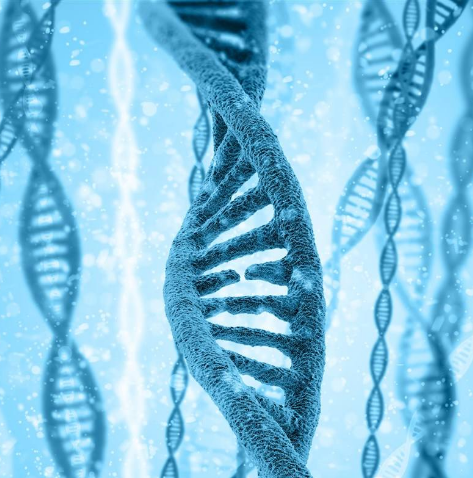Two French investigators, Jacques Monod and Francois Jacob, some-times working together and sometimes with other investigators, performed a series of genetic and biochemical experiments in the late 1950s that helped to elucidate the mechanism that regulates the lac system, They began by isolating constitutive E. coli mutants that make lac mRNA in the presence as well as absence of an inducer. Then they constructed a variety of partial diploid cells containing constitutive mutants and observed the cell's ability to synthesize β-galactosidase.
These mutations appeared to be of two types, termed lacI and lacOc. The lacI- mutations behave like typical minus mutations in most genes and are recessive (entries 3, 4). Because lac mRNA synthesis is off in a lacl+ cell and on in a lacI- mutant, the lacI gene is apparently a regulatory gene that codes for a product that acts as an inhibitor to keep the lac structural genes turned off. A lacI-mutant lacks the inhibitor and thus is constitutive. A lacl+/lacI- partial diploid has one good copy of the lacI- gene product, so the system is inhibited. Monod and Jacob called the lacI- gene product the Lac repressor. Their original genetic experiments did not indicate whether the Lac repressor is a protein or an RNA molecule.
This question was answered when an E. coli mutant with a polypeptide chain termination codon inside lacI was isolated and found to synthesize β-galactosidase constitutively. The most likely explanation for the constitutive lactose system is that the mutant strain synthesizes a truncated repressor protein that cannot block transcription of the lac genes. This conclusion was confirmed when the Lac repressor was purified and characterized (see below). Genetic mapping experiments placed the lacI gene adjacent to the lacZ gene and established the gene order lacl lacz lacY lacA.
A striking property of the taco c mutations is that in certain cases, they are dominant. The significance of the dominance of the lacOc mutations becomes clear from the properties of the partial diploids shown in entries 5 and 6. Both combinations are Lac+, because there is a functional lacZ gene. However entry shows that β-galactosidase synthesis is inducible even though a lacOc mutation is present. The difference between the two combinations inentries 5 and 6 is that, in entry 5, the lacOc mutation is carried on aDNA molecule that also has a lacz-mutation, whereas in entry 6, lacOc and lacZ+ are carried on the same DNA molecule. Thus, lacOc causes constitutive synthesis of β-galactosidase only when lacOc and lacZ+ are on the same DNA molecule, that is are in cis.
Confirmation of this conclusion came from an important biochemical observation An immunological test capable of detecting a mutant β-galactosidase showed that the mutant enzyme is synthesized constitutively in a lacOc ·lacZ-/ lacO+ lacZ+ partial diploid, whereas the wild-type enzyme is synthesized only if an inducer is added. This experiment takes advantage of the fact that a purified antibody to β-galactosidase will also react with the mutant protein as long as the structural differences between wild-type and mutant protein are not too great. A reaction of this type in which an antibody that is raised in response to one protein is used to detect a closely reIated protein is called a cross-reaction and the closely related protein is called cross-reacting material (CRM) thus, the presence of CRM, which can be detected by a variety of standard immunological, is indicative of the presence of mutant protein.








